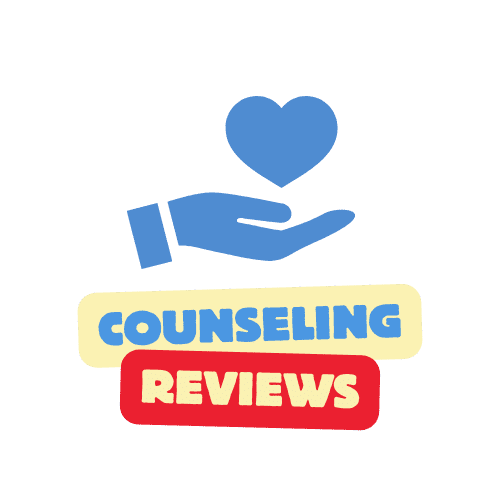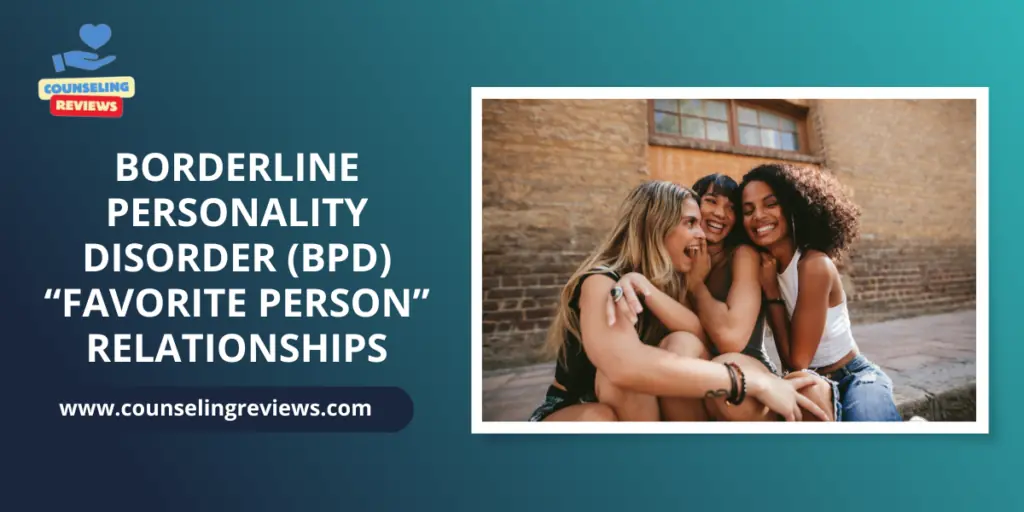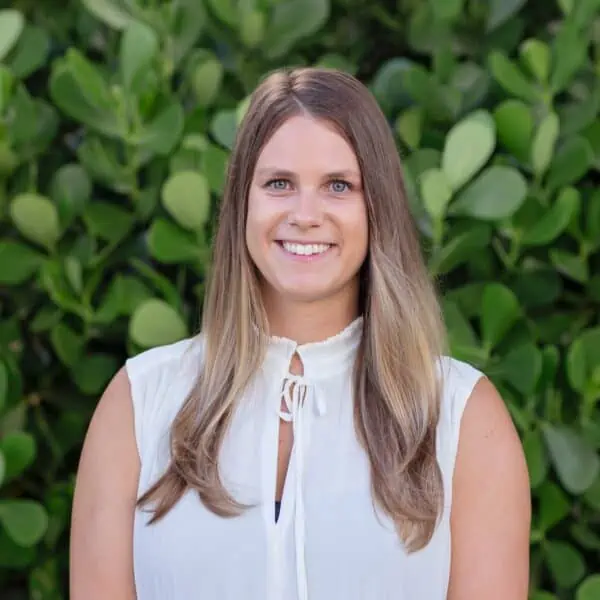Borderline Personality Disorder, or BPD, is a disorder known in the Diagnostic and Statistical Manual of Mental Disorders (DSM). It is a personality disorder that is described as deviant in ways of thinking, feeling, and behaving compared to others and cultural expectations. These differences in being oftentimes create difficulties for individuals to function as normal and can get in the way of their daily lives.
More specifically, Borderline Personality Disorder can be described as patterns of the following symptoms:
- Difficulties and instability in interpersonal relationships
- Very intense and deep emotions and emotional experiences
- Low self-esteem and poor self-image
- Impulsivity and acting on emotions
- Self-injurious behaviors and suicidal ideations
- Dissociative feelings or disconnecting from self
- Fear of abandonment and avoidance of situations that may lead to this feeling
According to the National Alliance on Mental Illness (NAMI), about 1.6% of the population in the United States of America has been diagnosed with BPD. Out of those 1.6% of individuals, 75% of them are female. Borderline Personality Disorder can be misdiagnosed as Post Traumatic Stress Disorder (PTSD) or depression, so there are some individuals living with BPD who are not diagnosed. Check how BPD affects men.
Characteristics of BPD Favorite Person Relationships
BPD can be classified as having many criteria or characteristics, including what is commonly called a “favorite person”. Since many individuals who are struggling with BPD or borderline tendencies may have an intense fear of rejection and abandonment, it is not uncommon for them to develop a favorite person that they latch on to. This favorite person is someone who creates a safe and caring environment for an individual with borderline tendencies, leading them to create a very emotional attachment and potential dependency on this person.
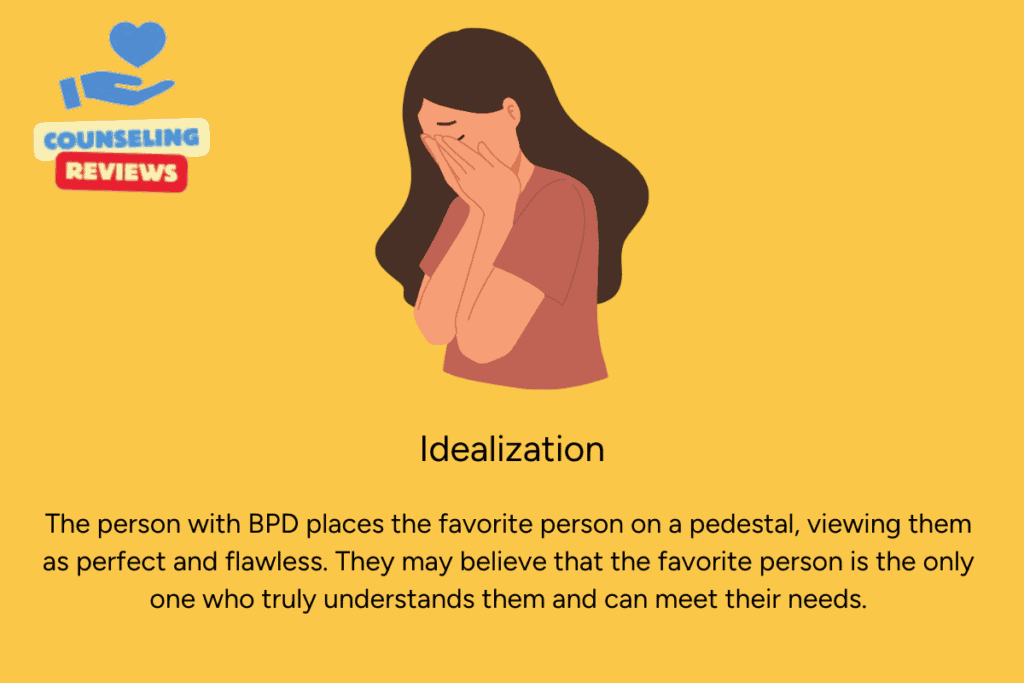
While favorite person relationships may seem healthy and appropriate, they can often be detrimental to an individual with BPD due to the unhealthy attachment formed. This attachment can be insecure, leading to potential negative impacts on someone if the relationship ends. Because of the extreme and insecure attachment, people diagnosed with BPD may end up pushing their favorite person away due to seeming obsessed with them. Similarly, they may have unrealistic expectations for a favorite person to meet their needs, further ruining the relationship and causing the favorite person to no longer want to be responsible for meeting such high and intense expectations.
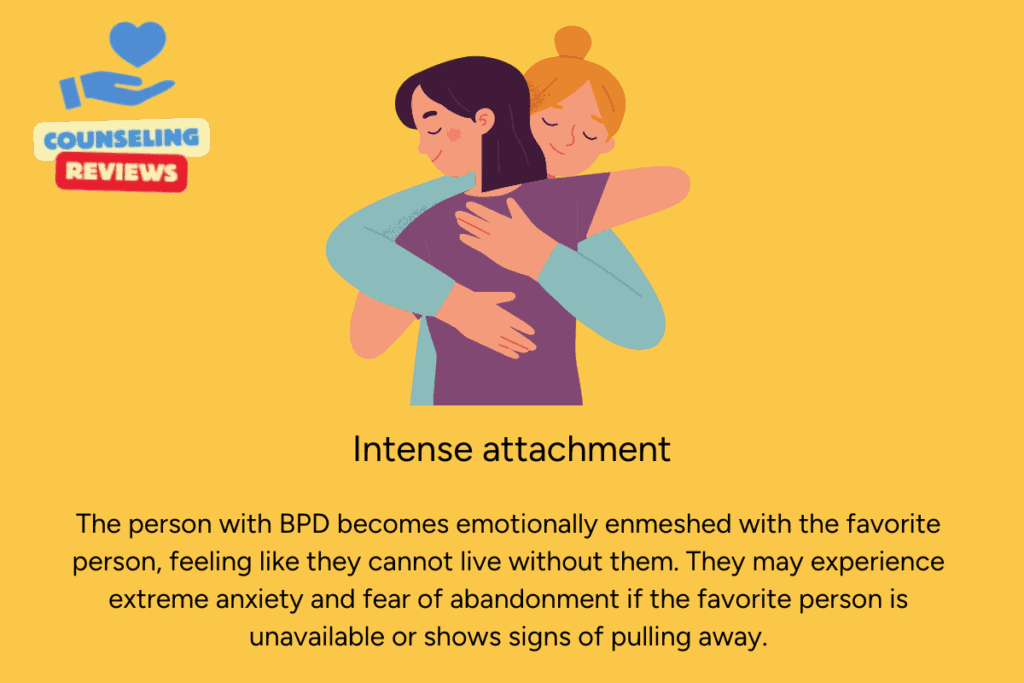
Another characteristic of a favorite person relationship is extreme efforts to save the relationship due to fear of abandonment and difficulties processing intense emotions. Since the attachment in a favorite person relationship is insecure, someone living with BPD may pour their entire self-worth and self-image into this one relationship. This can lead to frantically trying to “save” a relationship or resolve conflict within the relationship, even if it means resorting to efforts that others may typically view as extreme. Some individuals may go as far as threatening to end their lives or engage in self-harm to save a relationship with a favorite person.
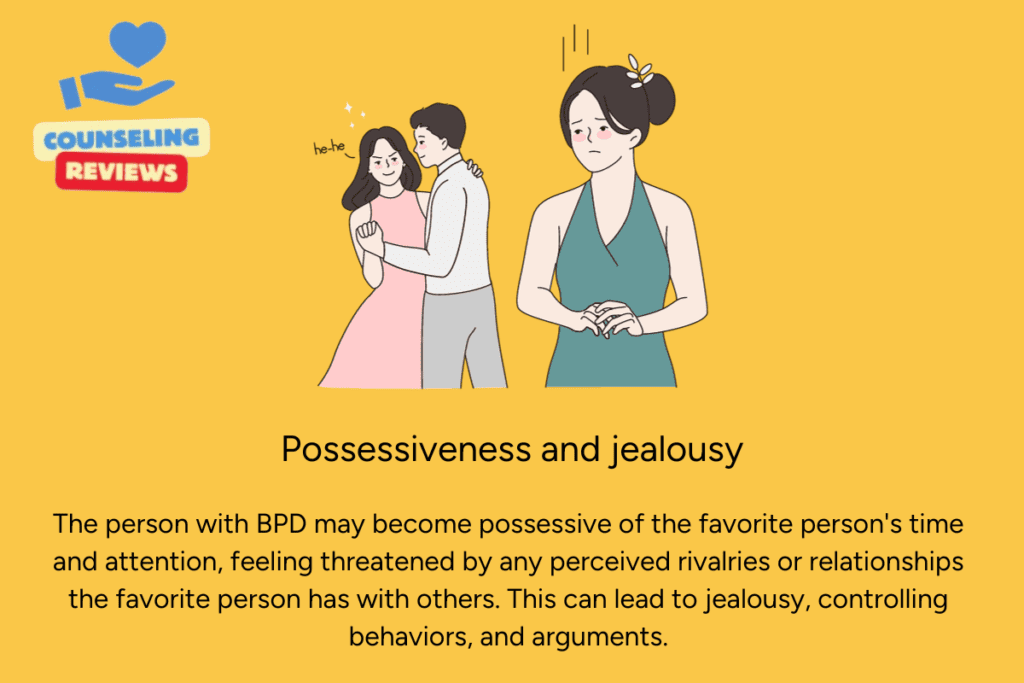
When the favorite person inevitably disappoints or fails to meet the person with BPD’s unrealistic expectations, they may be subjected to “splitting”, a defense mechanism where the person with BPD switches from idealizing the favorite person to devaluing or even demonizing them. This can create a volatile and unpredictable relationship dynamic.
Impact on Individuals with BPD
Favorite-person relationships can have both positive and negative impacts on individuals who have been diagnosed with Borderline Personality Disorder. Because both sides of the spectrum can be experienced in these types of relationships, they can often be difficult and potentially toxic.
When looking at the impacts of a favorite person’s relationship on someone who has BPD, there are some positive things that can come out of it. For example, a favorite person relationship may provide a safe place for someone to share their emotions and be vulnerable. Individuals with BPD can find validation and a space where their needs are being met, even if for a short period of time.
Where these relationships turn south is when the individual with BPD starts expecting more and more of their favorite person and that person can no longer meet the demand of the needs. Many times in the honeymoon phase of a relationship or friendship, things seem to be going great and everyone is happy. In a favorite person relationship, this can quickly transition into someone’s needs not being met. The individual who has BPD will significantly struggle with this and can start exhibiting extreme, obsessive, or hurtful behaviors. This leads to the breaking of a relationship, which further distresses someone with BPD and triggers the fear of abandonment and rejection.
It is important to note that favorite-person relationships do not exclusively have to be romantic. They can occur within a family unit, the workplace, or with friends.
Managing BPD Favorite Person Dynamics
Any relationship has dynamics that can be difficult to handle at times, whether family relationships, romantic relationships, or professional relationships. A key to managing the favorite person dynamics is all about awareness of the dynamic in the first place.
For individuals who do not have borderline tendencies or the diagnosis
It is important to recognize the signs of an insecure and unhealthy attachment. Noticing your own responses in a relationship and the intensity of the other person is a first step to being able to determine if you are someone’s favorite person, in BPD terms. While it can be difficult to engage in a relationship with someone who exhibits these behaviors, it is possible to navigate them effectively to save the relationship. With the help of open communication, validation, and boundary setting, favorite-person relationships do not have to turn into something negative.
If an individual does have BPD, finding a favorite person can be so joyous to the point of latching on and creating an extreme emotional attachment.
Those who have been diagnosed with Borderline Personality Disorder also need to work on the acknowledgment of their dynamics in a relationship, as well as the role they may play in them. Finding validation from both internal and external sources is pivotal when working on changing and navigating relationships, as the BPD individual tends to struggle with intense moments and fears around rejection. Again, using effective communication and emotion regulation skills can be key to keeping a favorite person dynamic healthy, and positive.
Seeking Support for BPD Relationships
To help navigate the complexity of BPD relationships, people may seek out the services of trained professionals. A mental health therapist or counselor can assist in supporting favorite-person relationships by helping each person learn coping tools for emotion regulation, communication, and having their needs met. Dialectical Behavioral Therapy (DBT) is a popular modality of therapy created by Marsha Linehan that works very effectively for borderline traits and diagnoses.
In addition to professional help, having other support systems can be another tool for a favorite person relationship. This is impactful for both the person with BPD and the other individual, as everyone needs to be supported and have a trusting person to go to when a relationship is tough. There have been support groups for both individuals that are similar to therapy, but also share the perspectives and stories of others with BPD or those who have a relationship with someone who has BPD. These types of groups can be beneficial in supporting a favorite person’s relationship in a healthy way.
